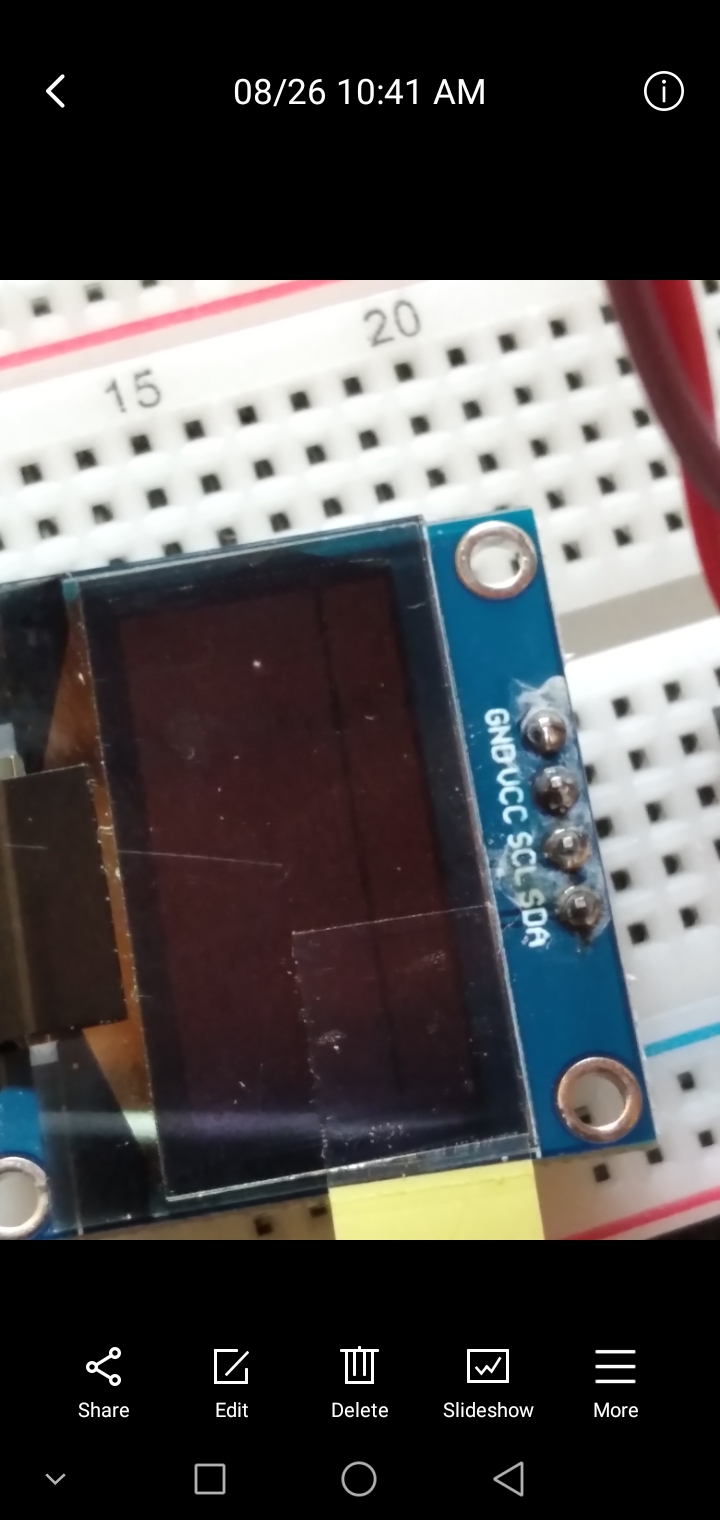-
-
Save tfeldmann/5411375 to your computer and use it in GitHub Desktop.
| // -------------------------------------- | |
| // i2c_scanner | |
| // | |
| // Version 1 | |
| // This program (or code that looks like it) | |
| // can be found in many places. | |
| // For example on the Arduino.cc forum. | |
| // The original author is not known. | |
| // Version 2, Juni 2012, Using Arduino 1.0.1 | |
| // Adapted to be as simple as possible by Arduino.cc user Krodal | |
| // Version 3, Feb 26 2013 | |
| // V3 by louarnold | |
| // Version 4, March 3, 2013, Using Arduino 1.0.3 | |
| // by Arduino.cc user Krodal. | |
| // Changes by louarnold removed. | |
| // Scanning addresses changed from 0...127 to 1...119, | |
| // according to the i2c scanner by Nick Gammon | |
| // http://www.gammon.com.au/forum/?id=10896 | |
| // Version 5, March 28, 2013 | |
| // As version 4, but address scans now to 127. | |
| // A sensor seems to use address 120. | |
| // | |
| // | |
| // This sketch tests the standard 7-bit addresses | |
| // Devices with higher bit address might not be seen properly. | |
| // | |
| #include <Wire.h> | |
| void setup() | |
| { | |
| Wire.begin(); | |
| Serial.begin(9600); | |
| Serial.println("\nI2C Scanner"); | |
| } | |
| void loop() | |
| { | |
| byte error, address; | |
| int nDevices; | |
| Serial.println("Scanning..."); | |
| nDevices = 0; | |
| for(address = 1; address < 127; address++ ) | |
| { | |
| // The i2c_scanner uses the return value of | |
| // the Write.endTransmisstion to see if | |
| // a device did acknowledge to the address. | |
| Wire.beginTransmission(address); | |
| error = Wire.endTransmission(); | |
| if (error == 0) | |
| { | |
| Serial.print("I2C device found at address 0x"); | |
| if (address<16) | |
| Serial.print("0"); | |
| Serial.print(address,HEX); | |
| Serial.println(" !"); | |
| nDevices++; | |
| } | |
| else if (error==4) | |
| { | |
| Serial.print("Unknow error at address 0x"); | |
| if (address<16) | |
| Serial.print("0"); | |
| Serial.println(address,HEX); | |
| } | |
| } | |
| if (nDevices == 0) | |
| Serial.println("No I2C devices found\n"); | |
| else | |
| Serial.println("done\n"); | |
| delay(5000); // wait 5 seconds for next scan | |
| } |
Hi
I am using this I2C scanner code on the ARDUINO TYPE IDE for GR Lychee board.
When i run the scanner , i get all the addresses as I2C Address on the serial monitor.!!
Instead there should be 4 addresses detected for gy80 sensor !!
Any Inputs on this ??
Hi
I am using this I2C scanner code on the ARDUINO TYPE IDE for GR Lychee board.
When i run the scanner , i get all the addresses as I2C Address on the serial monitor.!!
Instead there should be 4 addresses detected for gy80 sensor !!
Any Inputs on this ??
When I run this on the MSP430 I get the same result. Every address is a match...?
Did you find a solution?
got also every address is a match -> until i add pullup resistors
Example hack to use the a soft i2c library. Replace:
#include <Wire.h>
by
#define SDA_PORT PORTD
#define SDA_PIN 4
#define SCL_PORT PORTD
#define SCL_PIN 5
// https://github.com/felias-fogg/SoftI2CMaster
#include <SoftWire.h>
SoftWire Wire;
what is softwire in i2c?
Hi. thanks for the code.
I tried it but it says "No Devises found", even that I connected the OLED and Nodemcu as you said in the video.
could it be a problem with OLED screen that it's not working, I mean "broken"
how can I know if it's broken or not.
Please help me
Which video? Can you post a schematic?
Which video? Can you post a schematic?
I have ESP32 WROOM
Today I installed the RTC (real time clock) on the breadboard so as to see the time on the SSD1306 oled display.
The connections are correct, but the display didn't work, I took out all the components and only put the display back to test it and unfortunately it doesn't work anymore. Maybe it's burned out? The RTC component doesn't work either. Are both burned ?.
I await enlightenment.
Thanks

... good job.